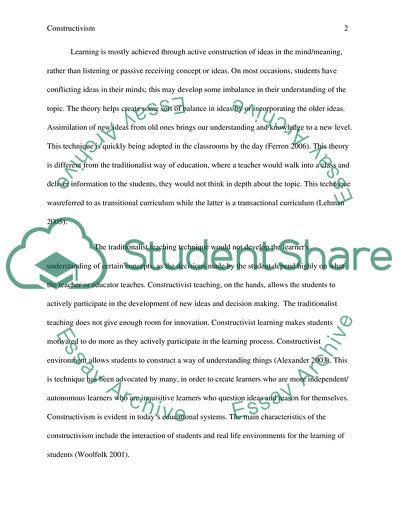Cite this document
(The Application of Constructivism Learning Principles in Classrooms Assignment - 1, n.d.)
The Application of Constructivism Learning Principles in Classrooms Assignment - 1. Retrieved from https://studentshare.org/education/1796261-est-103-instructional-psychology-assignment-1-a-study-on-the-application-of-constructivist-learning-principles-in-classrooms
The Application of Constructivism Learning Principles in Classrooms Assignment - 1. Retrieved from https://studentshare.org/education/1796261-est-103-instructional-psychology-assignment-1-a-study-on-the-application-of-constructivist-learning-principles-in-classrooms
(The Application of Constructivism Learning Principles in Classrooms Assignment - 1)
The Application of Constructivism Learning Principles in Classrooms Assignment - 1. https://studentshare.org/education/1796261-est-103-instructional-psychology-assignment-1-a-study-on-the-application-of-constructivist-learning-principles-in-classrooms.
The Application of Constructivism Learning Principles in Classrooms Assignment - 1. https://studentshare.org/education/1796261-est-103-instructional-psychology-assignment-1-a-study-on-the-application-of-constructivist-learning-principles-in-classrooms.
“The Application of Constructivism Learning Principles in Classrooms Assignment - 1”, n.d. https://studentshare.org/education/1796261-est-103-instructional-psychology-assignment-1-a-study-on-the-application-of-constructivist-learning-principles-in-classrooms.


